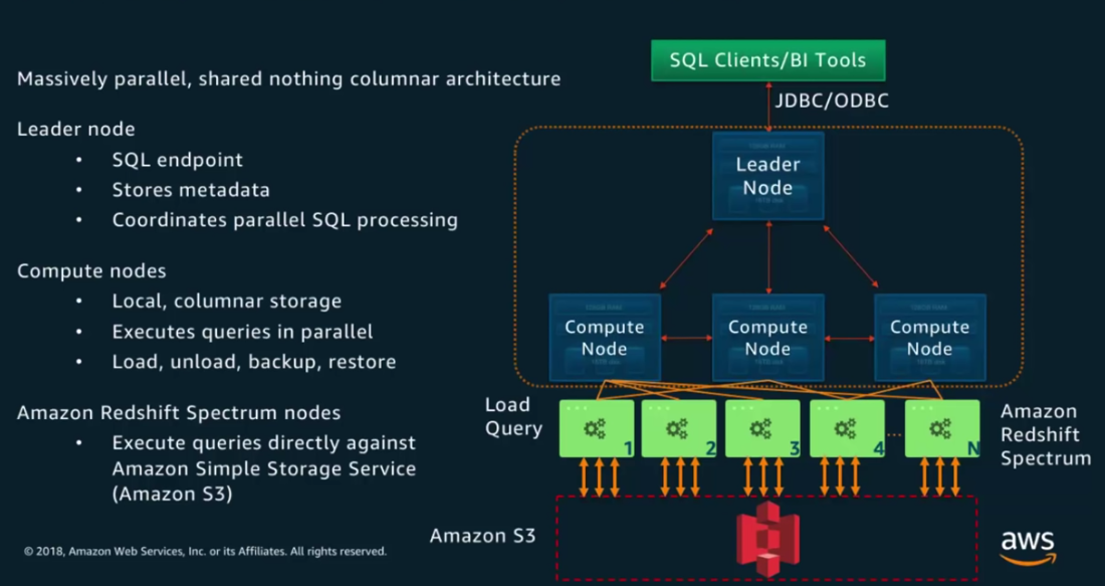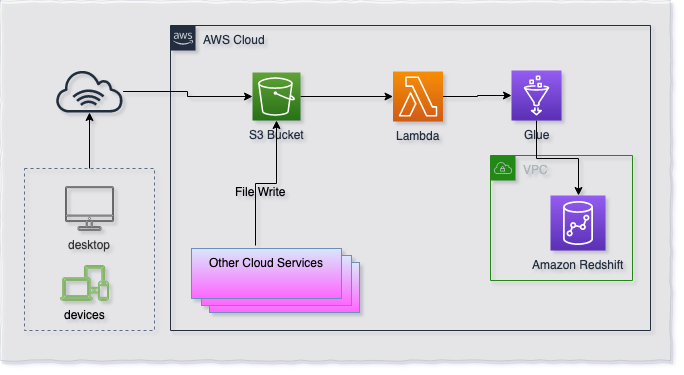

We can build extremely amazing and powerful reports and dashboards using existing business intelligence tools. Let’s look up to some live examples: 1: Operational analytics on business events:Īmazon Redshift has been used for gathering together structured data from the data warehouse and semi-structured data from application logs so that we can acquire real-time insights on applications and systems. There are various use cases where Amazon Redshift is being applied in the industry. We are flexible to opt whether we can choose the expense as a capital expense or operational expense. Redshift is considerably cheap than other on-premise alternative solutions prevalent.

It is also readily compatible with Postgres JDBC/ODBC Drivers. Redshift Query Engine is similar to the interface as PostgreSQL, which is based on ParAccel. You can add more nodes to your cluster to exceed it beyond the petabyte range. We can choose Dense Storage type of compute nodes that offer large storage space.

Redshift offers a petabyte range of data storage. Server-side encryption and client-side encryption can be used when loading data from S3. Cluster Encryption can be enabled at the time of launching the cluster to encrypt data stored in the cluster. Data Encryption, VPC for network isolation, various ways to access control options are available. There are many security features inbuilt with Amazon Redshift. This further leads to a decrease of I/O operations on disk which increases the performance. A huge and repetitive type of data is stored in the columnar storage database. Several factors are adding up to the high performance of Redshift such as query optimization, efficient data compression, and parallelism. The transition process here is quite smooth and flexible as data is moved parallelly between nodes of old and new clusters. The application, though, stays uninterrupted during this process, as the existing cluster remains available for the read operations. We just need to append or add extra nodes using Cluster API or AWS Console, whenever there is a requirement of high storage or speed. Scalability is a very mandatory feature for any Data Warehousing solution and activities. Let’s dive into them one by one, as per SNDK Corp: 1: Horizontally ScalableĪmazon Redshift is horizontally scalable. Top 6 Benefits of Amazon Redshiftīelow listed are a few of the merits or advantages of Amazon Redshift. You can analyze it by making use of various business intelligence tools available out there to gain insights for your customers and business. It is a solution that is well efficient and effective to collect and store all your data. Here comes the need of a competent data warehousing solution for data storage that will assist with keeping your data organized as well as making it easily accessible for analytics and reporting.Īmazon Redshift is a cloud-based, petabyte-scale data warehouse service that is provided and fully managed by Amazon Web Services (AWS). Some problems such as unmanageable data size and queries taking a lot of time are sure to be encountered. The size of data to be analyzed is becoming huge and massive day by day with the applications gaining adhesion. 1: Operational analytics on business events:ģ: Expedia Group makes use of Amazon Redshift:ĥ: Storing and Processing Data with Log Analysis:Ħ: Quick Analysis of Data for Business Applications in enterprises such as Brooks Brothers, Intuit, and Royal Dutch Shell:


 0 kommentar(er)
0 kommentar(er)
